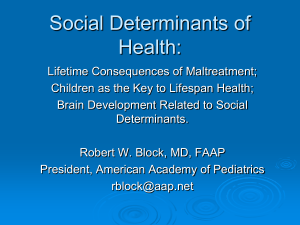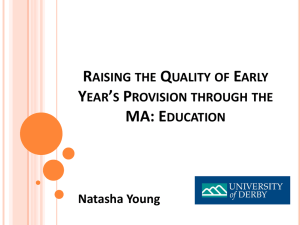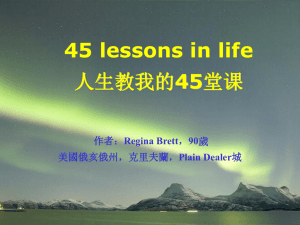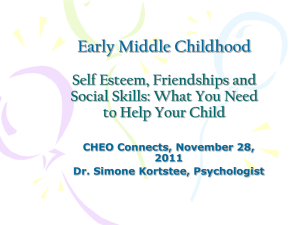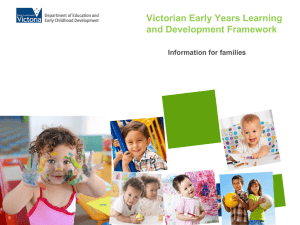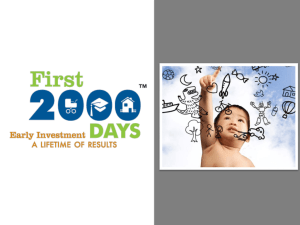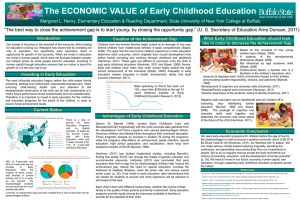New Science to Inform and Advance Prevention and Child Welfare
advertisement
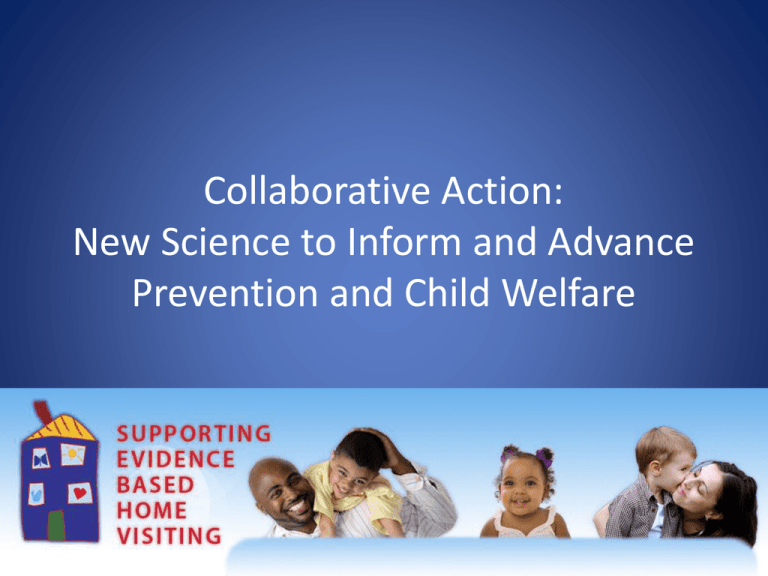
Collaborative Action: New Science to Inform and Advance Prevention and Child Welfare Robert W. Block, MD, FAAP President The American Academy of Pediatrics Professor Emeritus, University of Oklahoma School of Community Medicine, Tulsa The AAP Today • • • • • • • 62,000 members 66 state and local chapters 29 national committees 49 sections 9 councils Offices in Elk Grove Village, IL; & Washington, DC 400+ staff AAP Agenda for Children Economic Investment • Not Every Child Will Become an Adult; • But Every Adult Was Once a Child! Home Visiting • Because you never know how the story ends, without supportive intervention. • Taking advantage of opportunities to build resiliency for families. Parents and the Community • Integration of Community Programs to drive change: • The Foundation of Child Protection is the creation of SAFE, STABLE, NURTURING Relationships Why Are Social Determinants Important? • The Heckman Equation • Felitti, Anda: The Adverse Chidhood Experiences (ACE) Studies • Evolving Science in Brain and Human Development – The Effects of Toxic Stress James J. Heckman • Nobel Memorial Prize Winner • Professor of Economics, University of Chicago • Equation on Human Capital Development is a Solution for Securing America’s Economic Future. Many major economic and social problems in America — crime, teenage pregnancy, high school dropout rate, adverse health conditions — can be traced to low levels of skill and social ability such as attentiveness, persistence and impulse control. Professor Heckman found that early nurturing, learning experiences and physical health from ages zero to five greatly impact success or failure in society. The most economically efficient time to develop skills and social abilities is in the very early years when developmental education is most effective. Professor Heckman shows that disadvantaged families are least likely to have the economic and social resources to provide the early developmental stimulation every child needs as a basic opportunity for future success in school, college, career and life. Professor Heckman studied decades worth of data from early childhood development programs that gave disadvantaged children and their families developmental support. The Heckman Equation: Investing in early childhood development builds the human capital we need for economic success. What determines health? Genetics Pre –and perinatal factors Physical health Gender Trauma Relations with parents/siblings Family dynamics Personality Resilience Adaptability Biological Psychological Social/Cultural SES Family stability Social capital Work/employment Value system Neighborhood/Housing Religion HC Policy HC System ACCESS Access to and equity in healthcare are key health determinants. NORTH TULSA Shorter Life Expectancy 14 Year difference in Life Expectancy SOUTH TULSA Longer Life Expectancy Adversities During Childhood and Toxic Stress Pediatrics 2012;129:e224-e231 Pediatrics 2012;129:e232-e246 Positive & Tolerable Stress Toxic Stress Epigenetics Social Environment: Example One • Survey of 67,853 Nurses – Report childhood physical abuse: 54% – Report childhood sexual abuse : 34% • Increased Risk for Adult Type 2 diabetes: • 26% – 69%, for moderate to severe abuse. • Am J Prev Med, 12/2010 Example Two • Survey of 68,505 Nurses • Risk of Uterine Fibroids with increasing severity of childhood abuse: • 8% - 36%! • Also found that an emotionally supportive relationship during childhood was protective against this risk. • Jarrett RB, Epidemiology, 11/2010 Example Three • Interpersonal Violence (IPV), and “Housing Disarray” cause (or, are associated with) an increase in incidence of childhood asthma. • Cumulative or Multiple Stressors are most important. • J Epidemiol Community Health, 2010 Example Four • Among women with chronic pain syndromes, childhood maltreatment histories were associated with increased diurnal cortisol levels. • Abuse can lead to long-term changes in HPA activity. • Important to evaluate childhood experiences in fibromyalgia and pain syndrome patients. Nicolson NA, et al, Psychosomatic Medicine, 2010 Example Five • Poverty, mediated by chronic stress – • Associated with decreased working memory in young adults. • • Evans GW, Schamberg MA, Proceedings of the National Academy of Science, 2009 Last Example • Childhood Traumatic Stress – • Increases the likelihood of hospitalization with a diagnosed autoimmune disease, “decades into adulthood.” • Dube SR, et al, Psychosomatic Medicine, 2009 Adverse Childhood Experience (ACE) Study • Adverse Childhood Experiences (ACEs) are very common • ACEs are strong predictors of later health risks and disease • This combination makes ACEs the leading determinant of the health and social well-being of our nation • • • • • • • • • Recurrent physical abuse Recurrent emotional abuse Contact sexual abuse An alcohol and/or drug abuser in the household An incarcerated household member Someone who is chronically depressed, mentally ill, institutionalized, or suicidal Mother is treated violently One or no parents Emotional or physical neglect Death Early Death Disease, Disability New ACEs DVD Available from AVAhealth.org, $45.00 Adoption of Health-risk Behaviors Social, Emotional, & Cognitive Impairment Adverse Childhood Experiences The Influence of Adverse Childhood Experiences Throughout Life Birth How to Help Create Healthy Children and Families Resiliency and Well-being. Strengthening Families Creating a Resilience Framework • • • • • • Parental Resilience. Social Connections. Knowledge of Parenting Skills. Knowledge of Child Development and Behaviors. Support in Times of Need. Social and Emotional Competence of Children: – Early Childhood Education – “School Readiness” Thank You for Inviting Me!


